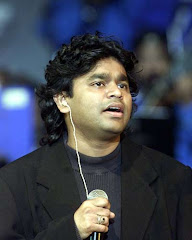DESARAJU SURYA
Hyderabad: Hyderabad is trying to “reposition” itself as a preferred destination for investments in Information Technology as the sector is showing signs of gradual recovery after a gap of over two years.
The Information and Communication Technology Department of Andhra Pradesh has sought to forge a partnership with the sector’s apex body Nasscom to help Hyderabad, and also the state, in the repositioning effort.
Members of Nasscom’s executive council, led by its (past) president Som Mittal, held a meeting with state IT Principal Secretary K Ratna Prabha here the other day and discussed the initiatives aimed at repositioning Hyderabad as a preferred destination for IT investments.
“First it was the global economic meltdown that cast a spell on the IT sector in Hyderabad. Next, the political turmoil in the state over the demand for and against the bifurcation of Andhra Pradesh caused a severe dent to Hyderabad’s image, thereby adversely affecting the IT sector’s growth. Hence the need for repositioning Hyderabad on the world IT map,” a senior official in the ICT Department said after the meeting.
While the ICT Department is about to announce the state’s new IT Policy for 2010-15, Nasscom has been requested to prepare a road map for promoting animation industry as well as engineering services as a new vertical in the IT sector.
The state government and Nasscom will work on policy measures for attracting engineering services companies in Andhra Pradesh with special incentives package. The policy measures will also include creation of Product Testing Laboratories for mission-critical operations.
Given the huge potential for graphics and special effects particularly in the Telugu film industry, the state government intends to work closely with Nasscom for promoting animation industry in Andhra Pradesh. “We want Hyderabad to emerge as a Centre of Excellence in the field of animation on par with Mumbai,” the IT official said.
Mittal, while promising full support to the state government’s initiatives, said the IT sector would continue to grow in the state, the current political turmoil notwithstanding.
The Nasscom chief also appreciated bringing the IT industry under the purview of Essential Services Maintenance Act and said it would provide the needed safety cover and enable 24x7 seamless operations in the state.
Thursday, April 22, 2010
Sunday, April 11, 2010
Biometric attendance for AP students
DESARAJU SURYA
Hyderabad: Students in Andhra Pradesh pursuing professional and non-professional education will soon have to mark their attendance in their respective institutions in the biometric mode.
The State Department of Higher Education (DHE) has prepared a plan to introduce the biometric attendance system in all professional and non-professional educational institutions from the next academic year with a view to “improve the performance of students.”
Also, the state government wants to ensure that the total fee reimbursement scheme, which it has been implementing for the past two years, becomes foolproof with the introduction of biometric attendance system, according to state Minister for Higher Education D Sridhar Babu.
“Biometric attendance is a unique system being introduced for the first time anywhere in the country. This will ensure regular attendance of students to colleges and improve their academic performance,” Sridhar Babu said.
Biometric attendance was part of the “reform measures and policy initiatives” introduced by his department to shape-up higher education in Andhra Pradesh, the Minister added.
The state government has earmarked a sum of Rs 2278 crore in the 2010-11 budget towards post-matric scholarships and tuition fee to “all eligible students of SC, ST, BC, Economically-Backward Class, Minorities and also disabled” whose family income is less than Rs one lakh per annum.
There were allegations in the last two years that the fee reimbursement benefit was not actually reaching all eligible students with some college managements siphoning off funds using fictitious names.
In fact, the Chief Minister’s Office received many such complaints against non-reimbursement of tuition fee, particularly for some eligible engineering students.
The government then thought of introducing the biometric attendance system as a foolproof measure to check such misappropriation of funds and also ensure prompt attendance of students, official sources said.
The DHE has already introduced a “students’ attendance monitoring system” at the Plus-2 (Intermediate) level in the state to “strengthen and improve academic standards” and also streamline the functioning of public-funded institutions, Sridhar Babu said.
“We have abolished the shift system in junior colleges which has resulted in increase of teaching hours and working days while we are also conducting daily study hours to improve the education standards,” the Minister added.
From the 2010-11 academic year, a common academic calendar is also being brought into force for all universities and colleges in the state.
“The objective of our reforms programme is to produce quality human resources to the society,” Sridhar Babu noted.
Hyderabad: Students in Andhra Pradesh pursuing professional and non-professional education will soon have to mark their attendance in their respective institutions in the biometric mode.
The State Department of Higher Education (DHE) has prepared a plan to introduce the biometric attendance system in all professional and non-professional educational institutions from the next academic year with a view to “improve the performance of students.”
Also, the state government wants to ensure that the total fee reimbursement scheme, which it has been implementing for the past two years, becomes foolproof with the introduction of biometric attendance system, according to state Minister for Higher Education D Sridhar Babu.
“Biometric attendance is a unique system being introduced for the first time anywhere in the country. This will ensure regular attendance of students to colleges and improve their academic performance,” Sridhar Babu said.
Biometric attendance was part of the “reform measures and policy initiatives” introduced by his department to shape-up higher education in Andhra Pradesh, the Minister added.
The state government has earmarked a sum of Rs 2278 crore in the 2010-11 budget towards post-matric scholarships and tuition fee to “all eligible students of SC, ST, BC, Economically-Backward Class, Minorities and also disabled” whose family income is less than Rs one lakh per annum.
There were allegations in the last two years that the fee reimbursement benefit was not actually reaching all eligible students with some college managements siphoning off funds using fictitious names.
In fact, the Chief Minister’s Office received many such complaints against non-reimbursement of tuition fee, particularly for some eligible engineering students.
The government then thought of introducing the biometric attendance system as a foolproof measure to check such misappropriation of funds and also ensure prompt attendance of students, official sources said.
The DHE has already introduced a “students’ attendance monitoring system” at the Plus-2 (Intermediate) level in the state to “strengthen and improve academic standards” and also streamline the functioning of public-funded institutions, Sridhar Babu said.
“We have abolished the shift system in junior colleges which has resulted in increase of teaching hours and working days while we are also conducting daily study hours to improve the education standards,” the Minister added.
From the 2010-11 academic year, a common academic calendar is also being brought into force for all universities and colleges in the state.
“The objective of our reforms programme is to produce quality human resources to the society,” Sridhar Babu noted.
Thursday, April 8, 2010
Sania Mirza: Shoaib Malik's Wife-2
DESARAJU SURYA
Hyderabad: It's official now: Indian tennis star Sania Mirza will only be the "second wife" of Pakistani cricketer Shoaib Malik. As per the Hanafi school of Islamic tradition, Sania becomes the second wife of Malik as he has divorced his “first wife” Ayesha Siddiqui. “Irrespective of whether they were married or not, Ayesha naturally became Malik’s first wife now that he had divorced her. This makes Sania Malik’s second wife as per Hanafi tradition,” Major G M Qadri, who was one of the mediators in the Ayesha-Malik divorce deal, pointed out. Both the Siddiquis and the Maliks follow the Hanafi tradition. Meanwhile, there is intense speculation that a “huge sum” was offered by Malik to Ayesha to end their marriage in a “cordial” manner. “The official (maintenance) amount is just Rs 15,000 but you should suffix many more zeros to it to count the actual ‘settlement’ sum,” a ‘family friend’ of Siddiquis claimed. Rumours that did the rounds at Congress leader Abid Rasool Khan’s residence, where the divorce was officially announced to media, indicated that Ayesha was offered a staggering Rs 15 crore to “settle” the case.
Hyderabad: It's official now: Indian tennis star Sania Mirza will only be the "second wife" of Pakistani cricketer Shoaib Malik. As per the Hanafi school of Islamic tradition, Sania becomes the second wife of Malik as he has divorced his “first wife” Ayesha Siddiqui. “Irrespective of whether they were married or not, Ayesha naturally became Malik’s first wife now that he had divorced her. This makes Sania Malik’s second wife as per Hanafi tradition,” Major G M Qadri, who was one of the mediators in the Ayesha-Malik divorce deal, pointed out. Both the Siddiquis and the Maliks follow the Hanafi tradition. Meanwhile, there is intense speculation that a “huge sum” was offered by Malik to Ayesha to end their marriage in a “cordial” manner. “The official (maintenance) amount is just Rs 15,000 but you should suffix many more zeros to it to count the actual ‘settlement’ sum,” a ‘family friend’ of Siddiquis claimed. Rumours that did the rounds at Congress leader Abid Rasool Khan’s residence, where the divorce was officially announced to media, indicated that Ayesha was offered a staggering Rs 15 crore to “settle” the case.
Wednesday, April 7, 2010
Software exports from Hyderabad take a big plunge
DESARAJU SURYA
Hyderabad: After witnessing quantum jumps year-over-year, software exports from Andhra Pradesh nosedived drastically in the financial year 2009-10, registering a sharp 40 per cent drop as compared to the previous year.
As per the figures presented to the state Legislative Assembly in the just-concluded Budget session, software exports turnover stood at Rs 22,000 crore in 2009-10 as against Rs 32,509 crore in 2008-09.
Significantly, a whopping 25,000 new jobs were created in the Information Technology sector in the state in 2009-10 compared to just 12,786 the previous year.
“While the IT sector as a whole looked robust, exports seemed to have tumbled because of various factors like the Satyam fiasco, global economic recession and of course the political turmoil in the state in the last few months. The impact of Satyam saga on the IT sector in Andhra Pradesh in particular could not be undermined,” a top official of the state Information and Communications Technology Department pointed out.
The Information Technology and Services Industry Association of AP (formerly Hyderabad Software Exporters’ Association), however, is not ready to take the government claims on face value and at the same time is also not willing speak anything on record.
A senior office-bearer of ITsAP said software export revenues were expected to remain “flat” in 2009-10 and touch the same figure as in 2008-09.
“The software export revenues were expected to remain flat because of the economic slowdown but we don’t expect them to fall so drastically,” he added.
In fact, ITsAP initially projected a growth in software exports from AP by 10 to 12 per cent in 2009-10 going by the Rs 12,000 crore business achieved at the end of the second quarter of the fiscal. That projection now turned out to be a far-fetched optimism.
AP’s software growth story had actually been remarkable. From just Rs 284 crore in 1997-98, software exports touched Rs 32,509 crore in 2008-09, peaking from Rs 3,668 crore (in 2002-03), Rs 5,025 crore (2003-04), Rs 8,270 crore (2004-05), Rs 12,521 crore (2005-06), Rs 18,582 crore (2006-07) and Rs 26,122 crore (2007-08).
The IT sector also grew exponentially over the years starting with 8,700 employees in 1997-98 to 2,51,786 in 2008-09.
Andhra Pradesh also has the highest number (57) of IT Special Economic Zones approved in the country of which 43 have already been notified.
“By February, 2010, 15 notified SEZs have become operational creating employment for 24,030 IT professionals. With the IT sector expanding to Tier-II cities like Visakhapatnam and Vijayawada, we expect software exports to pick up once again in 2010-11,” a top official of ICT Department said.
Both the government and the ITsAP now project software exports to touch Rs 50,000 crore over the next two years.
Hyderabad: After witnessing quantum jumps year-over-year, software exports from Andhra Pradesh nosedived drastically in the financial year 2009-10, registering a sharp 40 per cent drop as compared to the previous year.
As per the figures presented to the state Legislative Assembly in the just-concluded Budget session, software exports turnover stood at Rs 22,000 crore in 2009-10 as against Rs 32,509 crore in 2008-09.
Significantly, a whopping 25,000 new jobs were created in the Information Technology sector in the state in 2009-10 compared to just 12,786 the previous year.
“While the IT sector as a whole looked robust, exports seemed to have tumbled because of various factors like the Satyam fiasco, global economic recession and of course the political turmoil in the state in the last few months. The impact of Satyam saga on the IT sector in Andhra Pradesh in particular could not be undermined,” a top official of the state Information and Communications Technology Department pointed out.
The Information Technology and Services Industry Association of AP (formerly Hyderabad Software Exporters’ Association), however, is not ready to take the government claims on face value and at the same time is also not willing speak anything on record.
A senior office-bearer of ITsAP said software export revenues were expected to remain “flat” in 2009-10 and touch the same figure as in 2008-09.
“The software export revenues were expected to remain flat because of the economic slowdown but we don’t expect them to fall so drastically,” he added.
In fact, ITsAP initially projected a growth in software exports from AP by 10 to 12 per cent in 2009-10 going by the Rs 12,000 crore business achieved at the end of the second quarter of the fiscal. That projection now turned out to be a far-fetched optimism.
AP’s software growth story had actually been remarkable. From just Rs 284 crore in 1997-98, software exports touched Rs 32,509 crore in 2008-09, peaking from Rs 3,668 crore (in 2002-03), Rs 5,025 crore (2003-04), Rs 8,270 crore (2004-05), Rs 12,521 crore (2005-06), Rs 18,582 crore (2006-07) and Rs 26,122 crore (2007-08).
The IT sector also grew exponentially over the years starting with 8,700 employees in 1997-98 to 2,51,786 in 2008-09.
Andhra Pradesh also has the highest number (57) of IT Special Economic Zones approved in the country of which 43 have already been notified.
“By February, 2010, 15 notified SEZs have become operational creating employment for 24,030 IT professionals. With the IT sector expanding to Tier-II cities like Visakhapatnam and Vijayawada, we expect software exports to pick up once again in 2010-11,” a top official of ICT Department said.
Both the government and the ITsAP now project software exports to touch Rs 50,000 crore over the next two years.
Subscribe to:
Posts (Atom)





